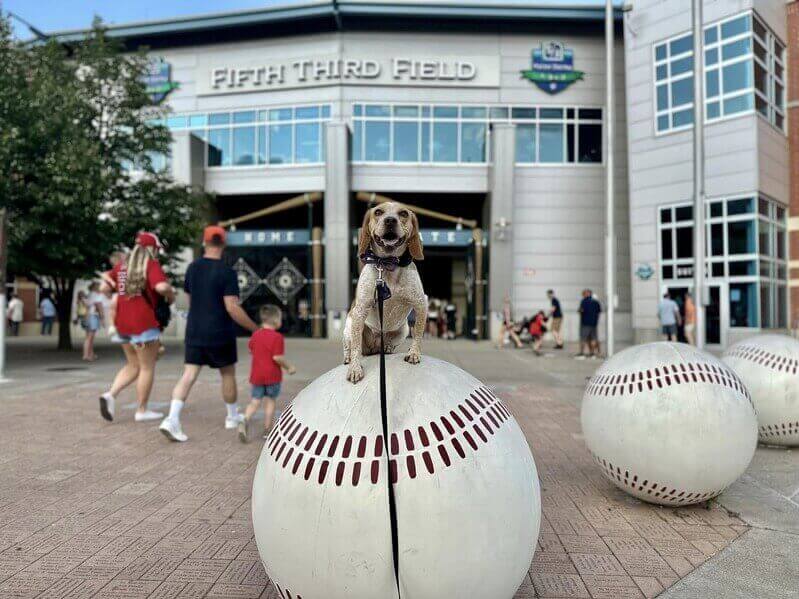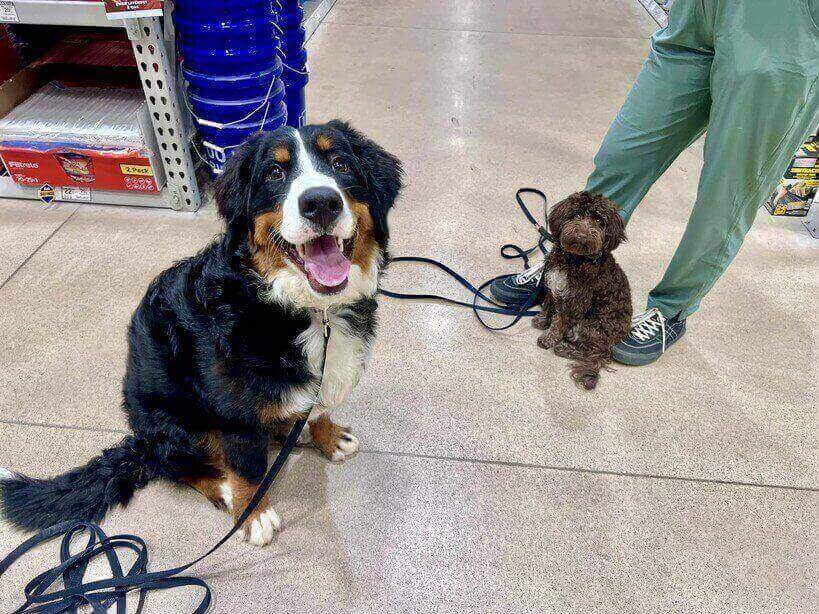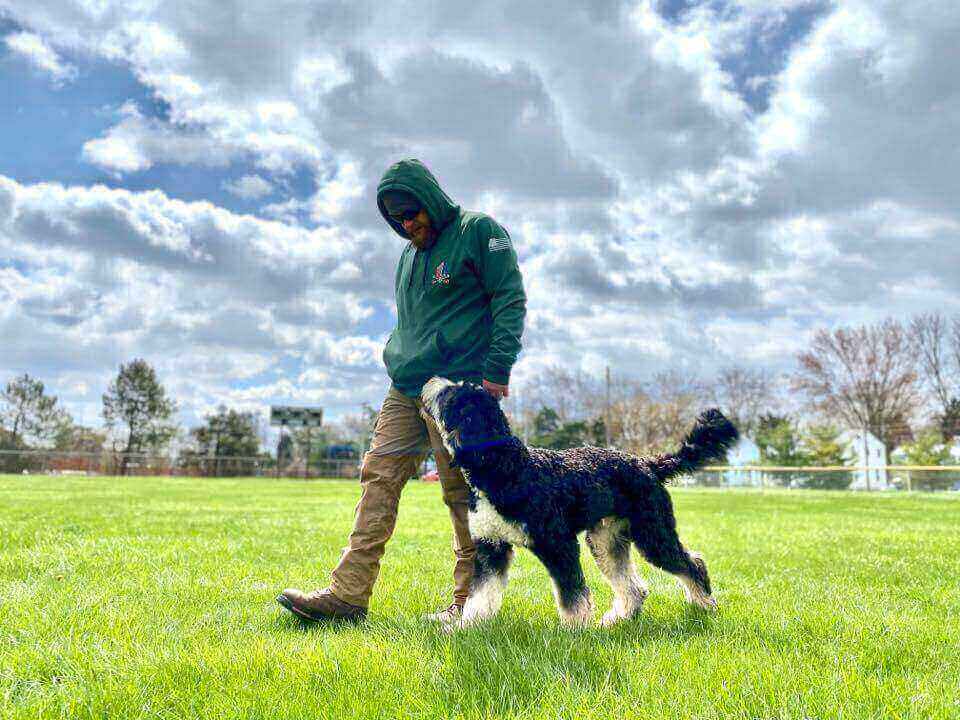What Are the 5 Golden Rules of Dog Training: Secrets to Success for Pet Owners
Do you dream of a well-behaved dog that responds to your commands with enthusiasm? Are you tired of struggling with leash pulling, barking, or destructive behaviors? If so, dog training is the key to unlocking a harmonious relationship with your furry friend.
A well-trained dog is not only a joy to have around but also safer and more confident in different situations. However, many pet owners struggle with the training process, often feeling frustrated and overwhelmed.
This is where knowing what are the 5 golden rules of dog training can make all the difference.
Following these five golden rules can transform your approach, making training more effective and enjoyable for both you and your furry friend.
Instead of focusing on what your dog does wrong, these principles help you guide your dog toward good behavior in a positive and consistent way.
Whether you’re dealing with a rambunctious puppy or an older dog needing some new skills, these rules are your roadmap to success.
Ready to unlock the secrets to better training?
Let’s dive into the five golden rules that every dog owner should know!
Why Is Consistency Key in Dog Training?
The backbone of effective dog training is consistency. It’s all about sending clear, steady signals to your dog, so they know exactly what’s expected of them.
Dogs learn through repetition and routine. If you use the same commands, rewards, and routines every time, your dog quickly picks up on what you want them to do.
Being consistent doesn’t just help your dog learn commands; it also builds their confidence. When your dog knows what to expect, they feel more relaxed and willing to learn. This sense of security makes them more eager to please and follow your guidance.
Importance of Establishing Consistent Commands and Routines
If you always use the same word for a command like “sit” and reward them each time they do it, your dog quickly understands that “sit” means to put their bottom on the ground.
But if you sometimes say “sit” and other times say “down” or give mixed signals, your dog won’t know which action to take.
It’s also important that everyone in your household is consistent with training. If one person allows jumping while another doesn’t, it sends mixed messages, confusing your dog.
By being on the same page, you’re all helping your dog learn the right behaviors.
How Can Positive Reinforcement Improve Dog Training?
Positive reinforcement is all about rewarding your dog for good behavior, which encourages them to repeat those actions. It shows your pet what they did right, making training a more pleasant and effective experience for both of you.
Positive reinforcement is not just about giving treats; it’s about communicating with your dog in a clear, kind, and encouraging way.
The beauty of positive reinforcement is that it creates a positive learning environment. This approach helps build your dog’s confidence and strengthens the bond between you.
The secret to successful positive reinforcement is timing. For your dog to understand which behavior earned them a reward, you need to give the reward right away — ideally within a couple of seconds. If the reward comes too late, your dog might not connect it with the right action, making learning slower and more confusing.
Types of Rewards for Positive Reinforcement
There are different types of rewards you can use, and choosing the right one can make a big difference in how well your furry companion responds to training. Let’s explore the main types of rewards:
- Treats – any tasty reward like small, bite-sized delicious snacks that your pet can eat quickly during training sessions. Examples include cheese, small pieces of cooked chicken or beef, apple slices, and low-fat, low-calorie commercial treats.
- Praise – the power of kind words help build your dog’s confidence and strengthen your bond. Dogs respond well to your tone of voice, so make sure your praise sounds happy and encouraging.
- Toys – for dogs that love to chew or need mental stimulation, chew toys and puzzle toys are a great reward. These toys can keep your dog engaged and provide a satisfying reward that lasts beyond the training session.
- Playtime – For many dogs, playtime is the ultimate reward. Activities like fetch, tug-of-war, or a quick game with their favorite toy can be just as rewarding as treats.
You don’t have to stick to just one type of reward. Mixing treats, praise, and playtime keeps things exciting for your dog and helps you find what motivates them the most. The key is to match the reward to your dog’s preferences and the training situation.
Benefits of Positive Reinforcement for Your Dog
Here are some key benefits of positive reinforcement for your furry friend:
- Strengthens your bond with your pet
- Reduces fear and anxiety
- Encourages motivation
- Prevents fear-based behaviors
- Builds confidence and trust
- Encourages good behavior
- Makes training fun and engaging
- Creates long-lasting results
Be Patient and Persistent: Every Dog Learns at their Own Pace
Patience is essential because training doesn’t always go as planned. Your dog might have good days and not-so-great days, and that’s perfectly normal.
Instead of getting frustrated when things don’t go smoothly, take a deep breath and remember that every small step forward is progress. Your calm and positive attitude will encourage your furry companion to keep trying, even when they make mistakes.
Being persistent means sticking with the training, even when it feels like your pet isn’t catching on right away. Repetition is how dogs learn, so keep practicing the commands and routines consistently.
Over time, your dog will start to understand what you’re asking, and their behavior will improve. The more persistent you are, the more confident your dog will also become.
Understanding the Learning Curve of Dogs
Dogs are intelligent creatures, but they learn at different paces. Understanding your dog’s learning curve can help you set realistic expectations and tailor your training methods accordingly.
Here are some key points to remember:
- Set realistic expectations and don’t expect your dog to learn everything overnight
- Break down commands into smaller, more manageable steps
- Avoid frustrations it will only make the training process more difficult
- Seek professional help from a qualified dog trainer if you’re struggling to train your dog on your own
What Should You Know About Punishing Your Dog?
Punishment is ineffective and harmful. Punishing your dog during training might seem like a quick way to correct bad behavior, but it often does more harm than good. It can damage your relationship with your dog, causing fear, anxiety, and aggression.
Instead of teaching your dog desired behaviors, punishment often leads to confusion, resentment, and a breakdown in trust.
Here’s why punishment is a bad idea:
- Punishment creates fear and anxiety
- Punishment damages the bond between you and your pet
- Punishment causes aggression
- Punishment results to ineffective training
- Punishment does not teach the right behavior
- Punishment leads to more behavioral problems
Short and Fun Training Sessions for an Enjoyable Experience
When it comes to training your pet, shorter sessions are often more effective than long, drawn-out ones. Research shows that dogs learn best in brief, focused bursts, making this approach not only easier but also more rewarding.
Dogs have short attention spans, and they can quickly lose interest if a training session goes on too long.
Keeping sessions around 5 to 10 minutes helps maintain your dog’s focus and energy.
These brief, lively bursts of training prevent boredom and frustration, ensuring that your dog stays motivated and ready to learn.
How to Create a Stimulating and Fun Training Environment
A fun and stimulating training environment can make a big difference in how well your dog learns.
Here are some tips on how to create a training experience that your dog will love.
- Choose a quiet space
- Use a variety of rewards
- Incorporate play time
- Change the scenery
- Use interactive toys and puzzles
- Maintain a positive atmosphere
- Give lots of praise and encouragement
- Mix up the commands
- Use different positive training methods
- Avoid distractions
Understanding the 5 Golden Rules of Dog Training and Why These Rules Matter
Understanding the 5 golden rules of dog training is more than just learning techniques — it’s about setting the foundation for a happy and successful relationship with your furry pup.
The five golden rules of dog training are not isolated principles. They work together to create a harmonious and effective training experience. All are essential for building a strong bond with your furry companion.
These rules aren’t just quick fixes; they are lifelong principles that guide your dog toward becoming a well-behaved, confident companion.
Training isn’t something that happens overnight; it’s a lifelong journey. The golden rules of dog training lay the groundwork for this journey, helping your dog learn good habits early on that will last a lifetime.
If you need help applying the 5 golden rules of dog training or simply need guidance on how to get started, we’re here to support you every step of the way.
Whether you’re looking for a personalized assessment, expert guidance, or just some friendly advice, our team is ready to help you set your pet up for success.
Don’t let training challenges hold you back from having the well-behaved, happy pet you’ve always wanted.
Reach out to us today, and let’s work together to make training a positive and rewarding experience for both you and your furry friend.
Together, let’s take the first step towards a lifetime of success with your furry companion!










